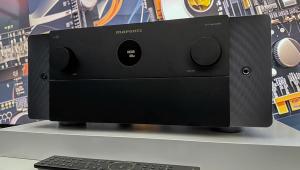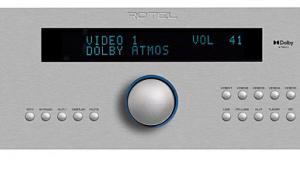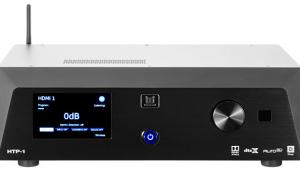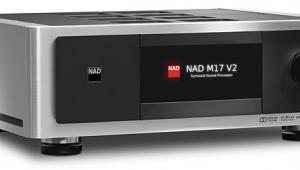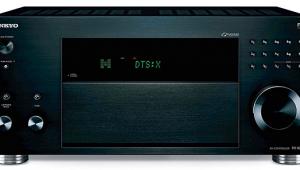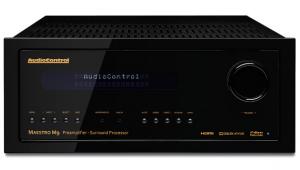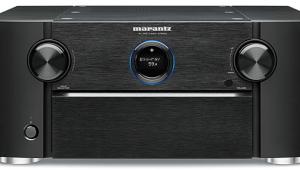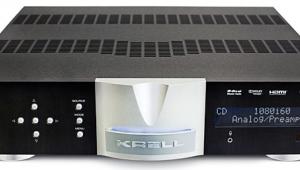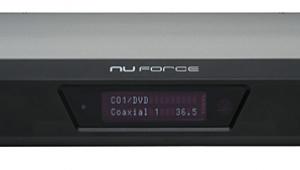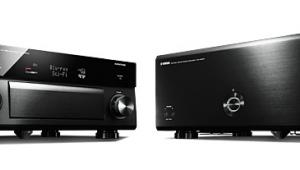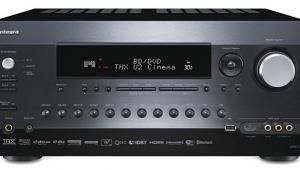Emotiva UMC-200 Preamp/Processor

I’m not an engineer, and no, I don’t play one on TV either, although I’ve been around the A/V business long enough to know the technological challenges manufacturers face when creating a new pre/pro or AVR from the ground up. This is especially hard for smaller companies with limited budgets in an HDMI-enabled world.
Over the last few years, we’ve seen this firsthand. In late 2009, Parasound posted a letter from its president, Richard Schram, telling its customers the company was scrapping three of its much-anticipated 7.1 surround processors due to engineering challenges, exorbitant costs, and concerns that even if these projects were completed, it couldn’t assure that its high quality standards could be met.
A few months later, Web-direct Outlaw Audio cancelled its Model 997 surround processor due to numerous factors, including engineering delays and the subsequent release of HDMI 1.4 chipsets that came to market sooner than the company expected. Its flagship pre/pro would have been obsolete the day it hit the street—which is never a good thing.
Emotiva, another Web-based direct-sales audio company, experienced its own troubles when it released its first HDMI-enabled preamp/processor, the UMC-1. Anyone who frequents the various A/V forums on the Internet is well aware of the various firmware issues the company had with the product. To its credit, Emotiva issued a public apology to its customers and extended a money-back trial period as well as a 40 percent off trade-up to all UMC-1 purchasers for one of its next-generation processors. That’s how you build brand loyalty in the 21st century!
Time Moves On
So here we are some time later, and the folks at Emotiva have finally released their next-generation pre/pro, the UMC-200. Like its online competitor Outlaw Audio, Emotiva has targeted the entry-level preamp/processor market by aggressively pricing its unit at $600. While the UMC-200 doesn’t have all the bells and whistles found on many of the mainstream AVRs and pre/pros on the market, it serves up an astounding value.
Much like the Outlaw Model 975 I reviewed recently, the UMC-200 isn’t much to look at. At only 10 pounds, it won’t have you running to the chiropractor for an adjustment after placing it in your equipment rack (admittedly, no preamp really should), but it sports solid build quality and isn’t flimsy by any stretch. The simple but effective front panel is absent of any knobs. Instead, the pre/pro possesses an array of push buttons that includes directional controls, menu, standby, return, and volume. There’s also a headphone jack and a microphone input for use with the Emo-Q Gen2 proprietary automatic room correction system. A dimmable LCD display rests in the center of the unit, but unfortunately for those who practice dark-room viewing, it can’t be turned off completely.
The rear panel is well laid out and organized. It sports unbalanced 7.1-channel analog RCA inputs and outputs, an additional balanced subwoofer output (which can be used simultaneously with the unbalanced sub output), four analog stereo inputs, and AM/FM antenna inputs. Digital connections include two coax and TosLink ports, four HDMI 1.4 inputs, one HDMI output (with ARC—Audio Return Channel), and two USB inputs—one for software updates and the other for an optional proprietary Bluetooth dongle to stream music from your iDevice, Android, or other Bluetooth-enabled audio platform. Rounding things out are a couple of 12-volt triggers, zone 2 and 3 stereo analog outputs, a removable power cord, and a master on/off switch.

UMC-200 is built for a digital video world and includes no legacy support for analog video. This may limit its overall marketability but isn’t a bad trade-off in a budget pre/pro in these days of digital sources. Since I haven’t used an analog video source in a few years, I didn’t miss them one bit. Furthermore, the unit offers no video processing capabilities and passes through any HDMI video to your display. The unit does include Xpressview switching technology, which in theory promises to switch between HDMI inputs in less than a second. In practice, it doesn’t work quite as fast—usually the handshake between changing components is 5 to 7 seconds with my equipment. This includes an Oppo BDP-103 Blu-ray player and TiVo Series3 DVR connected with AudioQuest Carbon HDMI cables to the pre/pro, which are then output to a JVC RS-40 1080p projector with a Monoprice RedMere 50-foot HDMI cable. My main audio source is a Logitech Squeezebox Touch hooked up to a Windows Home Server that stores all of my music in various audio formats (FLAC, WMA-Lossless, and MP3).
Other features include a Video-On-Standby function, which can be configured to send audio and video to your TV even when the UMC-200 is switched into standby mode, making it easier for the kids to watch cartoons without having to power on your entire A/V system.
Emotiva is first and foremost an audio company, and it knows that one of the most important aspects of a pre/pro is audio decoding. For the UMC-200, the company has chosen Twin Cirrus 32-bit dual-core fixed-point DSPs that support virtually every surround format, including Dolby TrueHD and DTS-HD Master Audio. The aforementioned proprietary Emo-Q Gen2 room correction is unique in certain respects because it gives the end user complete control to customize its output with an 11-band parametric EQ for five channels (FL, FR, C, SR, SL) and includes four different memories to store the settings. So if you’re an audio geek who wants to use REW (Room EQ Wizard) to get the most out of your audio system, the free software and Emotiva UMC-200 are a marriage made in heaven.
The UMC-200 includes an onscreen menu system that’s very intuitive, and setting up the unit for the first time is a breeze, especially with the Emo-Q Gen2 on board. All you need to do is place the supplied microphone on a tripod in the money seat and follow the onscreen instructions. From start to finish, the entire process takes about 10 minutes, and in my particular case, it nailed the distances to my speakers right on the nose. The crossover settings for my M&K S150 monitors were set a little low at 70 hertz for the left and right and 60 Hz for the center, which is slightly lower than the 80 Hz THX recommends. But the real head-scratcher was that it set my SVS subwoofer at 175 Hz—much too high, in my opinion.
The stock remote is non-backlit and made of plastic, but I found it fit well in my hand and offers many unique controls. It’s not a universal remote but may be able to control your Blu-ray player if you enable CEC control in both the pre/pro and player. It also offers direct access buttons to each HDMI input, toggles to control the audio output (Direct, Stereo, Mode +/–), and direct access to trim controls for the back surround, surround, subwoofer, and center speaker to make adjustments on the fly—a very nice touch.


